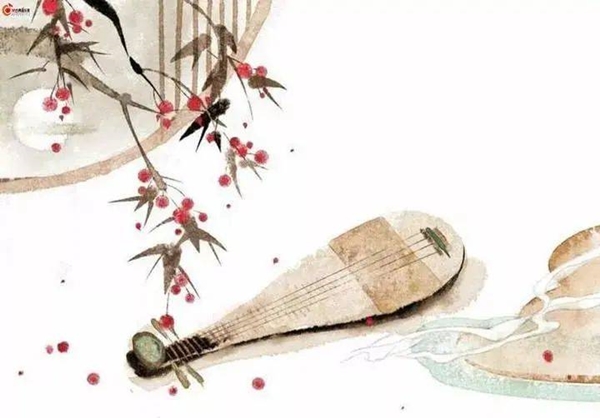Who says national musical instruments have no character
Like people, musical instruments have personalities. Just like the human voice, some people can sing higher, while others can only sing low. There is an unseen law in it. What kind of voice sings what kind of song can't be messed up.
So, what kind of character do Chinese national musical instruments have?

Tragic Character: Erhu and Matouqin
There are many musical instruments in China, but most of them are tragic characters. For example, the erhu is a very tragic musical instrument, so the blind A Bing will use it to play his inner misery.
Imagine A Bing walking slowly in the drizzle in the south of the Yangtze River while pulling the erhu. The alley is slender and long, and the stone pavement is wet and shiny by the rain.
When it comes to the tragic character, the same is true of the matouqin, and often the person who plays the matouqin still tunes the strings there, and the taste of tragedy comes out. It is a sad musical instrument in its heart.
Matouqin can also play fast-rhythm songs, but this is not the true nature of Matouqin. The true nature of Matouqin is a low, desolate, weeping muddy tone effect.
The most "characterless": Guzheng and Pipa
Among Chinese musical instruments, the pipa is relatively "characterless". It is somewhat like a piano, without too obvious personality factors, but it can play all kinds of songs.
It can be happy, but it can also be sad, which makes it show a kind of generosity, like an almighty actor, it can play anything.
Guzheng is also like this. For example, in the song "House of Flying Daggers", we can feel that the horse is running non-stop. And the rain is also falling in the song, the cloud is dark in the song, and the fire is red in the song. Pipa and Guzheng are such big role actors.
Lonely but not social: Guqin and Xiao
Guqin and Xiao are lonely and gregarious escapees. Other musical instruments are sound, but Xiao and Guqin are rhythm, which requires greater patience to appreciate and requires imaginative cooperation.
When listening to Xiao music and Guqin music, you have to close your eyes and let yourself temporarily leave the reality of chai, rice, oil and salt. You cannot appreciate Xiao and Guqin when you are hungry and have a strong sensuality.
Xiao's character is actually tragic, a kind of misery in the spiritual realm.
Free and easy: flute
The flute and the xiao look similar, but actually have different personalities. The flute is bright. "The lonely boat is moored in the depths of the reed flowers, and the flute is in the moonlight building." This flute makes the moonlight appear brighter, and the realm of poetry is not too desolate.
The flute is cheerful and jumping, but in the northern part of Shanxi, as soon as the flute appears in a local drama like Errentai, it becomes strangely miserable. The flute is from the countryside, but the xiao is from a book.
Straightforward and elusive: Suona
Among Chinese musical instruments, the suona is a very strange musical instrument. It is played there with joy and sadness at one time, making people completely unpredictable.
The scenes of red and white affairs in China are inseparable from the shock of suona. You feel that the character of this instrument changes too quickly and too impermanently. Like it or not, it all depends on what kind of scene it is. It is the scene that determines its position, not it.
The character of the suona is straightforward, so straightforward that it is a bit snarling, startled, unstoppable, or stretched, like a line, you see it broken, but it is clearly not broken, you can't imagine blowing it. Suona people, where did they go to find such a long breath.
Aloof and Alone: Xun
Among Chinese musical instruments, the most incredible thing is the xun. It blows in your ear, but you feel far away. When it blows far away, you feel it is very close.
This is a musical instrument that wins with rhyme. It is a kind of character that has nothing to do with oneself and hangs up high, detached and alone. Everything in the world seems to have nothing to do with it. It is the rhythm in the dream. When the things in front of you become real, they become real, the charm of xun. will disappear immediately.
There are many kinds of Chinese folk musical instruments. Although musical instruments have characters, they also vary from person to person. What kind of mood you treat it, how it will treat you, "what kind of person, what kind of piano", only you know.
 渝公网安备 50010702504639号
渝公网安备 50010702504639号